Kyvio Blog - Product Launches
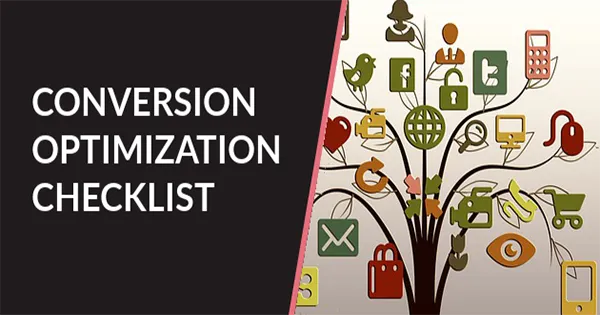
71 Point Checklist For Conversion Rate Optimization
No matter how successful business you are running there’s always something that you can improve.
Conversion rate optimization (CRO) can provide a significant opportunity for businesses of any size.
Through your marketing activities, you are allowing your business to generate more revenue via one of the following ways:
Bring more traffic to your website = and therefore more sales
Optimize the effectiveness of your site = and convert existing visitors to customers
This article about conversion rate optimization (CRO) will focus on the latter.
Now, there is a whole plethora of both small and big changes to copy, layout, and design that can end up having a major impact on the number of people who sign up for your service or buy your product.
Even the smallest tweaks and changes can have a significant impact on the bottom line.
Testing is the key factor when it comes to CRO. Without it, you’re left relying on your gut instinct to determine what will be more effective.
Take the guesswork out of the equation
Testing will allow you to immediately get a grasp if the change leads to an increase or decrease in conversions and it takes a guesswork out.
Whatever you do, remember: no matter how much your business currently generates, it can generate more if you test the options.
The number of tests you can eventually run are endless.
Each change has the opportunity to impact conversions, and small wins add up over time. Here is the ultimate checklist of things you can pay attention to.
Easily navigate through the checklist using the link below:
Copy & Content

1. Outsource copy creation
Content writing can be extremely time-consuming. Thing is – this is a debate that could go on and on but some of the benefits of outsourcing the copywriting are really unbeatable:
You get the high quality content
People who are writing copy for a living are probably much more experienced in this than you are
It saves you a ton of time
There are numerous truly brilliant agencies that can produce high quality copy consistently, and that is kind of people you want to outsource crafting your content to.
Presenting the idea of your business in a clear and understandable language can make a great difference for your visitors.
2. Have a specific flow of your copy
Make sure your copy is easy to read and understand.
If you are doing this in house, make an outline of what you would want to say and what you think is important to communicate. Then, fill in the gaps.
Most of the people who write their own copy make this rookie mistake showing the features of the product they sell right away.
This way they forget to properly introduce the visitors to the product. So, in most of the cases visitors leave not knowing what the product actually does – or, even worse, they leave because they do not know what the product actually does.
See this checklist:
Explain the problem that your product solves
Describe the solutions you offer
Show how easy it is to use it
Show off with additional features
3. Bullet points and checklists
The majority of your visitors don’t read your copy; the most common scenario is that they just skim your copy. Using bullet points will make your content more scannable.
People absorb more content if the page is easy to understand.
4. Well-thought product or service description
If you are running an eCommerce you want to make sure you don’t just copy the description of the products from your supplier; create your own catchy description to intrigue the visitors.
If you are running a productized service business – make sure you invest a bit of your talent into tackling a unique description of what you do.
Keep it brief and fresh!
5. High-quality images and videos
As long as you might think that having high-quality images and videos on your blog and website is not that much important – it is.
Many small and mid-sized businesses fail to dedicate a budget for this but visually, it does make a difference.
More often than not, visitors do not have any excuse for a lousy looking website.
6. Creative catchy headlines
The headline should be in line with the type of business that you have, and should also represent your company as a whole.
Create a headline that is easy to remember so users can easily recognize it. It can sound like a name of the song or a movie or you can describe it in one word and provoke intrigue -anything that is easy to remember.
7. Value proposition
When crafting a copy keep in mind one thing:
You are not selling a feature. That said, consider moving cool features and additional information (such as where you servers are) more to the bottom of your page.
That said, consider moving cool features and additional information (such as where you servers are) more to the bottom of your page.
What your visitors want to see in the first three seconds of landing on your page is:
What is this product?
What problem is it solving?
8. Make sure your landing page headlines match the words in your PPC ads
If you are doing paid advertising – and who isn’t – and it isn’t paying off, perhaps you are doing something wrong?
Keep an eye on your headlines when you are making a copy for your website. Eventually, you would want this headlines to match the ones in your PPC ads.
9. Incorporate video on your site
Play with different types of content. Do not make any limitations.
Include a funny video or a sketch. Include an audio recording.
Adding a video to your landing page might intrigue visitors to stop and see more about your product. Try doing the following things:
Upload a quick walkthrough video of your tool or service
Include video testimonials
Turn your blog posts into short sketches with a link back to your blog
Make sure your video looks nice and not too stuffed with colors, features, elements – you would want your visitor to focus on what your product does.
10. Optimize your homepage
It’s so easy to forget that your homepage serves a number of various purposes.
Among all the other functions that it has, your homepage is primarily your welcoming page and your main guide through your website. Make it easy to navigate and do not staff it with too many elements and too much text.
Pro tip: Keep your homepage fresh and constantly test it to deliver the maximum to your visitors.
Search & Navigation

11. Creative 404
Yes, your customer got 404ed. Bummer. It’s ok to cheer them up with some cool and funny graphics, but it’s better if you give them navigation options or suggest some pages based on the input.
If the sole input is in the URL query string, cleverly parse it and use it for the search. Look at a 404 as an opportunity to offer a user additional value.
12. Account registration
Let customers browse through your products and choose what they like first. Do not force them to register to be able to fill up the shopping cart. Optionally, it can be done at the checkout.
Make it as easy and painless as it gets. Allow them to log in with other identity providers like Facebook and request only the data you cannot do without – they are going to love it!
13. Determine search accuracy
Relevant search results are essential for the customer to get the right and actionable information. Test the search and tweak the engine so you can bring up the relevancy for your customers. This is also an opportunity to play a bit and show some related and also relevant options.
This is also an opportunity to play a bit and show some related and also relevant options – might get them intrigued.
14. Categorize your products
Your categories should reflect your user’s thinking. Sounds impossible? Test it.
Name the categories using well-established names that the user can easily relate the product with. Make more popular categories easy to find and access – that will help users navigating the site.
15. Removing the navigation bar from landing pages
It’s a fact that navigation links kill your landing page conversion rate. The purpose of the landing pages is to focus on the single offer, not to present your whole brand. Users are eager to click on the home page link – don’t allow them to get there easily. A/B tests clearly show that it will increase your conversion rates.
16. Reduce checkout friction
Always make checkout button visible. Don’t have user navigate through the labyrinths of the product categories. Don’t have them fulfill 5 more conditions to be eligible to check out. If possible, make it dead-simple – one-click checkout, just like Amazon does.
17. Category search
Too many search results just make noise for the customer. If you enable search restrictions by category, you’ll make their life much easier.
18. Search history
Display user’s recent searches – they’ll have a chance to reconsider buying that product they were checking out last time or get the idea for looking for the product similar to the one they ran into two weeks ago.
19. Order confirmation
Don’t fear to be redundant here – display the order confirmation right away. Make it accessible anytime to be revisited and send in an email about the order confirmation.
Usability
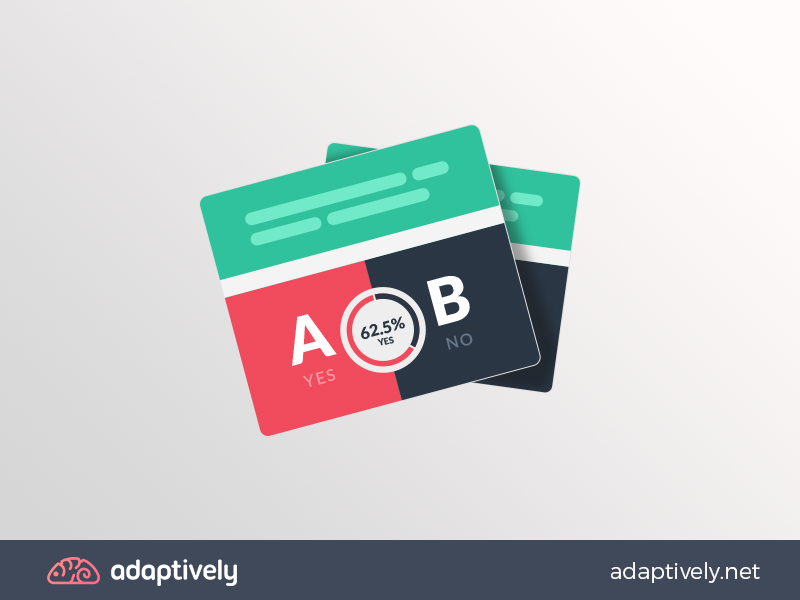
20. Reduce distractions
You want for your visitor to be focused on the message you’re communicating. Or to press that CTA button. Try not to distract them with video clips, pop-ups or flying-in-from-the-left charts. Be clear about what you want to say.
21. Perform usability testing
It is a no-brainer that your site should be very easy to use for the visitors to enjoy it and return back again. Usability testing is a must to achieve that goal. Based on your needs, time and budget, you should at least do a paper prototype testing or automated usability evaluation. If the budget allows, controlled experiments will give you the most precise results.
22. Page loading speed
Your website should load fast. No backing out from that rule – it affects web crawlers, it affects user experience and thus the bounce rate. Some applications like Google PageSpeed Tools can help you in optimizing page loading speed by checking the rules like:
Minifying CSS, HTML and JavaScript
Prioritizing visible content
Reducing server response time
Leveraging browser caching
Optimizing images
Enabling compression
Removing render-blocking JavaScript from the important content segments
23. AMP
Accelerated Mobile Pages provide fast access and seamless user experience across the platforms. By focusing on the 3 AMP components:
AMP HTML (includes some restrictions and AMP-specific tags)
AMP JS – library that is optimized for the fast rendering
AMP Cache – Google’s proxy-based content delivery network
You can (and should) create fast mobile-optimized pages.
24. Optimize validation error message
This doesn’t mean that you should optimize your error messages for keywords. Instead, you should pay attention if the message is informative enough. It also shouldn’t be aggressive, rude or machine-like. Show some human touch behind it.
25. Meta tags
Optimized not for keywords, but for readership. Use it as a marketing tool, not just for SEO purposes.
26. Text Clarity
It’s easy to get seduced with the soothing pastel colors giving the relaxing visual effect of matching the text with the background, but you’ve brought people to your page to communicate the information. It’s usually done using the text so make sure that they can read it effortlessly. For hundreds of years (remember printed books?) it is proven that high-contrast text on white background is most effective, so why not use it on your page?
27. Privacy Link
Your privacy policy link should not open a new page. Try a popup.
When you navigate a user to a new page, you lose them for the rest of your page content. it can also annoy the user if they were looking for a specific piece of information (e.g. pricing) and have to change back to a previous page. Pop-up is faster and more focused way for the user to overview the information.
Of course, you can provide a separate link for the convenience, and also if you have complex policies like Google and Facebook, you’ll provide more robust search & navigation.
28. Comparing click and scroll behavior between different segments of your visitors
Sure, you need to know everything about how users behave on your site and heatmaps are there to provide you with all the data. But only creating a correct segmentation will provide real analytical value. So, think about the questions you want to be answered first – do you want to know what’s the commonality in the behavior of users that bounce? And how is it different to the returning customers? Choose your segments wisely and avoid “aggregate data crap”.
29. Observing the depth of fold across different pages, using scrollmaps
Scrollmaps can give you great statistics about how far users will scroll through your page. This is important so you can place your content strategically and also to try to increase the depth. You should examine this statistics for every page category separately – homepage, blog post and ‘contact us’ have inherently different scroll depth statistics.
30. Form field appearance
Don’t assume users will guess the function of the field. Pay attention for the labels to be always readable and informative. Also, the form should be linear and follow users assumed flow. It should be intuitive for the user what to do next.
Choose the text field / text box size based on the assumed length of the response.
31. Identifying form-fields that contribute to abandonment of your web forms
No one wants to give extra private information, to lose precious seconds or troubleshoot why your form got stuck. So, think carefully if you really need that year of birth there right away, or if you have to have the phone number in that exact format. Allow users to get in quickly and safely and collect needed data afterward. And make sure there are no technical issues.
32. Mandatory field tags
It should be distinguished if the input field is optional or mandatory by utilizing appropriate tag. Users will very much appreciate if they get an example input for each field.
33. Checkout optimization
Checkout should be super-easy and inviting. Your shopping cart should persist chosen articles whether the user is logged in or not. Automatically pre-fill as much information as you can – from their previous orders or based on the entered zip-code.
Don’t force the user to enter all the information again if there is an error on some of the fields after submitting the information – preserve previous input and highlight the erroneous fields.
Analytics

34. Google Analytics
Even if you are not a number geek, you should not ignore Google Analytics if you want to advance your business.
Digital analytics are extremely important in day-to-day business because they help you understand your website performance.
As a business owner, it’s extremely important to see what visitors are doing on your website, how they interact with it and how they move through funnels.
Keeping a close eye on your Google Analytics will help you out maximize your sales and marketing efforts.
Pro tip: Keep an eye on Ecommerce Reporting or Enhanced Ecommerce on your website.
35. Ignored elements
Dig through your analytics and see the key elements on specific web pages that are getting ignored by your visitors. Those are the parts that probably need most improvements.
36. Eliminate distracting elements
Here’s the hard set rule: one page, one goal.
Using heatmaps you can easily see how your visitors navigate through your page in real time. You can see just how much distractions can some elements provoke and you should be aware of them.
Your goal is to focus your visitors’ attention on the most wanted action. And what is your most wanted action – allowing them to move seamlessly to the end of the page where a specific action will be desirable.
Eliminate the distractions such as:
Numerous CTAs
Too many different colors
Automatically played videos and webinars
37. Boost macro and micro conversions
Although the final goal of optimizing your website should be maximizing your conversions – there’s a certain amount of focus you have to put into the fulfillment of the small conversions or, so called, micro conversions.
If you are looking at a “sales of a service” as a final conversion, micro conversions will be signing up for a newsletter, downloading an ebook, signing up for a course.
All of these should be analyzed and then the good praxis should be copied.
Build trust & engagement

38. Mine customer feedback
A low hanging fruit we often forget about and a goldmine to explore is actually – feedback.
Feedback coming from your customers can be really helpful in acknowledging all the issues they are facing and identifying possible solutions for the troubles.
Ways to ask for a customer feedback:
Emails
Newsletters
Exit attempt
Live chats
39. Add reviews
Although this is often seen as a double-edged sword, there are numerous case studies that show how reviews can significantly skyrocket your sales.
Your visitors will be able to read the “real person’s” opinion which is seen as objective and therefore more trustworthy.
40. Add testimonials
Social proof has never been more important in than in the days of online business. Marketing executives at some of the major companies are using testimonials as a part of their content marketing strategy.
Testimonials can craft a significant emotional appeal for your branding. Many surveys show that testimonials help convey your overall brand message in a more clear manner.
Video testimonials can help you out skyrocket your email marketing conversions. Include them on your website and see why so many surveys that have been conducted show how people are more likely to believe a video to a text testimonial.
41. Add a security seal
Looking to increase conversions by building trust?
Put a “trust badge” on a checkout page. The goal is to convince potential customers that the process is safe and secure.
In the times when online fraud is an everyday event, it’s important for customers to feel secure.
If you are not sure about the exact design of the seal you want to put, head over to some of the most trustful online companies and check their seals for inspiration.
42. Add a picture of a real person
This is where you’ll really need to A/B test. Seeing a human photo on a website can definitely have a positive impact on visitor’s first impression and can increase trustworthiness.
Seeing a photo of a real person on a website can definitely have a positive impact on visitor’s first impression and can increase trustworthiness.
Real photos that focus on a face are much better than just a generic photo.
However, this is not a hard set rule for all the websites. The best practice is to A/B test with and without a real person’s photo and see what visitors interact more with.
43. Real-time surveys
If you haven’t already, it’s the right time to try out On-page surveys.
VWO On-page Surveys do everything you would want from a website polling tool.
You can trigger the polls to appear in different ways, and the amount of customization is really vast.
44. Segmented and branching logic surveys
Try out segmented surveys so you can display surveys to different types of visitors depending on their preferences.
You can find out more about your visitor’s preferences and purchasing barriers from segmenting the audience.
Try using branching logic technique that will allow you to redirect visitors to a certain answer – based on their previous answer.
45. Implement live chat
Implementing live chat is shown to significantly boost conversions.
For all those people who want to immediately get an info – there’s no better way than opening a live chat box at the bottom of the page.
Be careful though – you would want the live chat box to stand still in the footer. Sometimes, popping up and down can cause distractions and annoyance to visitors.
User experience (UX)

46. Embrace new design trends
Make sure your website doesn’t look outdated. People will easily discard odd-looking website with 2007 design as unprofessional and neglected by its owners. Eye appealing web design converts better than you thought.
47. Swap columns
Test swapping right column with left.
48. Two-column or three-column layout?
Experiment with the two-column vs three-column layout.
While some people want to see as many products possible, others will just want to focus more and scroll through larger images of the product.
You can even make the user switch between layouts. Of course, it also depends on the device – you can increase the number of columns for the larger screens.
Have that in mind and be flexible about these things to ensure you are providing the optimal layout for your visitors.
49. Category pages opportunities
When creating a category page, try and explore different things and test them. For example, treat them as a new home page. Or try to relate them to other categories.
Try a grid view for more focus on the product pictures, or list view for more details and cross-referencing.
You will be surprised just how many opportunities are out there.
50. Show product videos below the fold
This is a good strategy that can help market your product. Showing videos above the fold may disrupt or distract the customer from buying. Videos can be an effective way of showing off a product, but leave them for the users that already decided they want to know more.
CTA
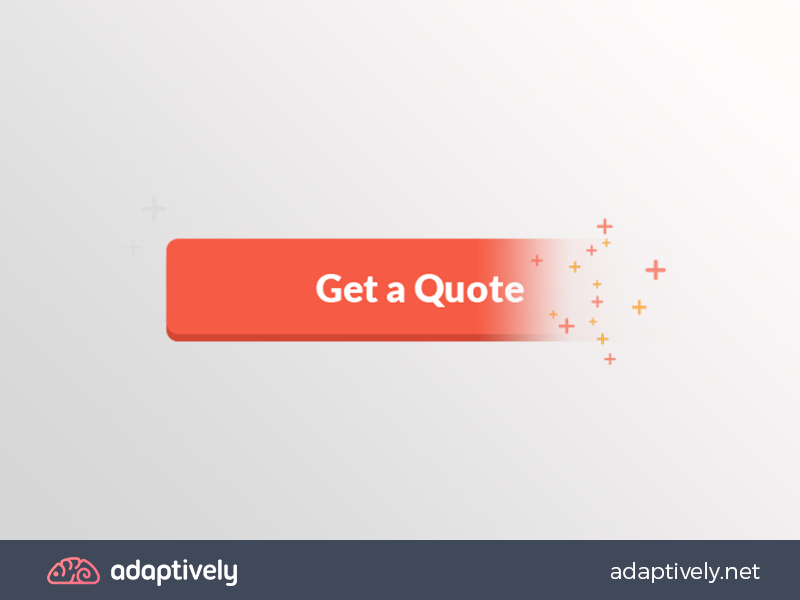
51. Buttons
Be as specific as possible with the text displayed on your button.
Try and switch between Order Now vs. Get a Quote vs. Instant Quote, etc.
52. Test a Big Orange Button
It is true that people are over-obsessing about the colors of CTAs but there’s come to an agreement when talking about the Big Orange Button.
Big Orange Button simply converts.
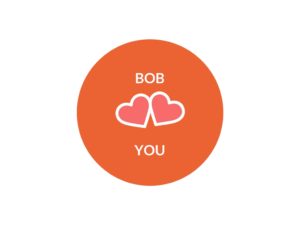
Why orange? Read psychology of color and do not forget to test.
53. Improve about us page
‘About us’ page shouldn’t be about you. It should be about your customer. About what they expect to find there. So, let it be all be there – show them what you do, what are your values, where to find you, make it easy to contact you. Show them who’s behind the service, be personal. Give them the feeling of trust, that’s what matters.
So, let it be all be there – show them what you do, what are your values, where to find you, make it easy to contact you. Show them who’s behind the service, be personal. Give them the feeling of trust, that’s what matters.
54. Thank you message and page
This is your chance to recommend other products on the store!
You can also use this page for newsletter sign up, social media following and sharing, feedback, and even for customer support.
Pricing & Payments

55. Show price on landing page
Tend to be transparent and about the price.
If you’re not comfortable with this – simply add a “Starting from.”
More often than not, your product is relevant to the visitor but he/she doesn’t want to provide the extra effort of asking for a price through an email or a form. Often they just want to avoid having to talk with too many sales and marketing people.
56. Good refund policy
Some studies have shown the connection between the duration of the refund policy and the refund requests.
Try offering longer the guarantee/return policy and see if there is less of returns or refund requests. While this might not be appropriate for every business, it’s certainly worth trying because it will also build up loyalty.
57. Offer more ways on how to pay
Payment options are sometimes the main reason of where the consumer decides to shop.
Offering more payment options to their customers, it is expected to see fewer cart abandonments and, therefore, more sales.
58. Extra cost should be stated right away
Don’t hide them under the rug. Be transparent about these extra costs you’re charging.
Order & Delivery

59. Shipping
Everyone likes fast and reliable product shipping. Provide your users with that, if possible. If you can do it with no additional cost for the customer – great! If not, let them choose if they would like to pay additionally for the faster shipping or to wait a bit and get their package free of charge. More options are always better here.
60. Good shipping policy
People expect to know when and how their items will be shipped and clear and easy-to-understand policy should provide them with that info. Consider including following topics in it:
Standard/Expedited shipping
International shipping
Handling time & fees
Insurance
Return policy
61. Delivery date
Where applicable, allow for the customer to choose the date of delivery. If you provide just the estimate, specify how precise it is and if there are any guaranteed end dates. It would be perfect if your customer could track every step of the delivery. No one likes to be left in the dark.
62. Offer more ways on how to order
Sure, you don’t want to confuse your customer by presenting many order options at the checkout. You’ll present the most common one – purchasing via your website, but also make easy for them to make phone orders if they have problems or would like to chat and ask additional questions.
Security
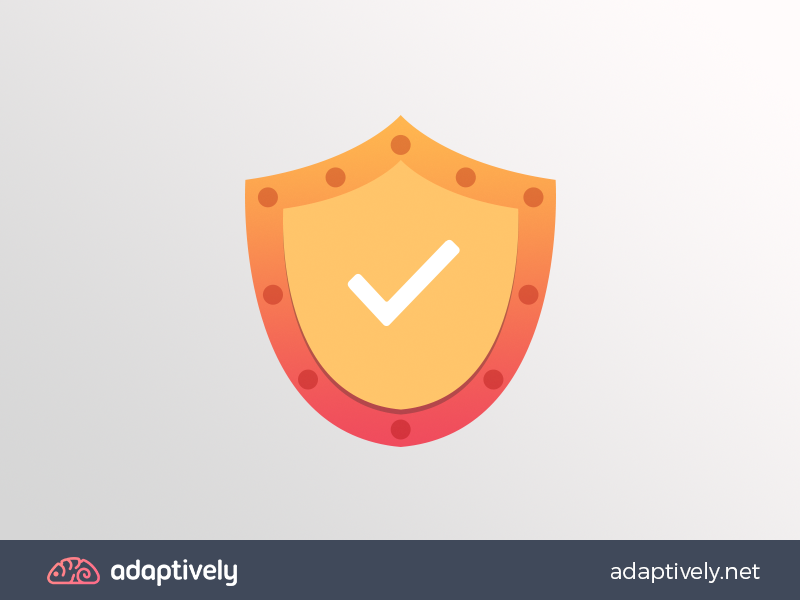
63. Update software running your site
Hackers are constantly looking for the vulnerabilities in web technologies. And they are finding them. Of course, ‘good guys’ are patching the software to keep you safer from reported vulnerabilities. That’s why it’s important for you to be constantly updating website components – being it the CMS, plugins, libraries or web server. If you cannot do it, rely on someone who you trust – hosting company or dedicated expert.
64. SSL
If you’re eCommerce site, you cannot run without the SSL. SSL provides encryption between user’s browser and your server. That’s important to keep passwords, credit cards and other sensitive info secured. Make sure you have that padlock thing green on your website – request SSL certificate from your hosting provider or issued from some other certificate authority.
65. Password reset emails
Always provide a password reset option. It should be easily done via user’s email. Don’t ever send the previous or the new password, instead provide them with the link to the password reset form on your website. Confirm the reset with the final email, for the security reasons.
Newsletter
66. Newsletter sign-up
Email newsletters help your brand stay top of mind with your readers, as well as current and potential customers. Make sure you optimize your newsletter sign up.
You can also do one of the following things upon subscribing:
Offer an incentive for those who sign up
Free swags (like t-shirts)
Free demo
Free ebook or a course
67. Autoresponder series
Once you’ve gone through creating a great landing page strategy and managed to make visitors engage – you will start receiving their emails in your list builder, but what now?
Make sure you scrutinize your autoresponder emails.
68. Test open rate
As much as we would like to say “Yo, Google, what’s the best time to send a newsletter?”, Google
Keep a close eye on the exact hours and days when your email open rate was higher and keep in mind the progress that you’re after.
69. Split test the subject of your mail
While no one would leave an empty subject line (on purpose!), just adding some text to a subject line and launching the campaign isn’t going to work to.
Test which headlines get more opens and stick to the better ones.
70. Test how they “click”
For most people, the real trouble isn’t the open rate but rather – the click rate. For an optimized click through rate test different word number, the number of links inside the email, the number of images… MailChimp has conducted a study to show why spammers have the biggest click-through rate.
Funny enough – their message is clear and they put the focus on that CTA more than anyone else who might think “it’s a bad taste’.
71. AdConnect
Would you call this a shameless promotion?
While AdConnect is a 60-second landing page builder that will allow you to easily A/B test any of your solutions, the software itself will also instantly create matching Facebook ads.
Talking about time-saving solutions, we have to mention that AdConnect provides you with a free Live Editor that allows you to preview all the changes in real-time.
You’ll never again waste so much time on page creation and testing.
Happy optimizing!



